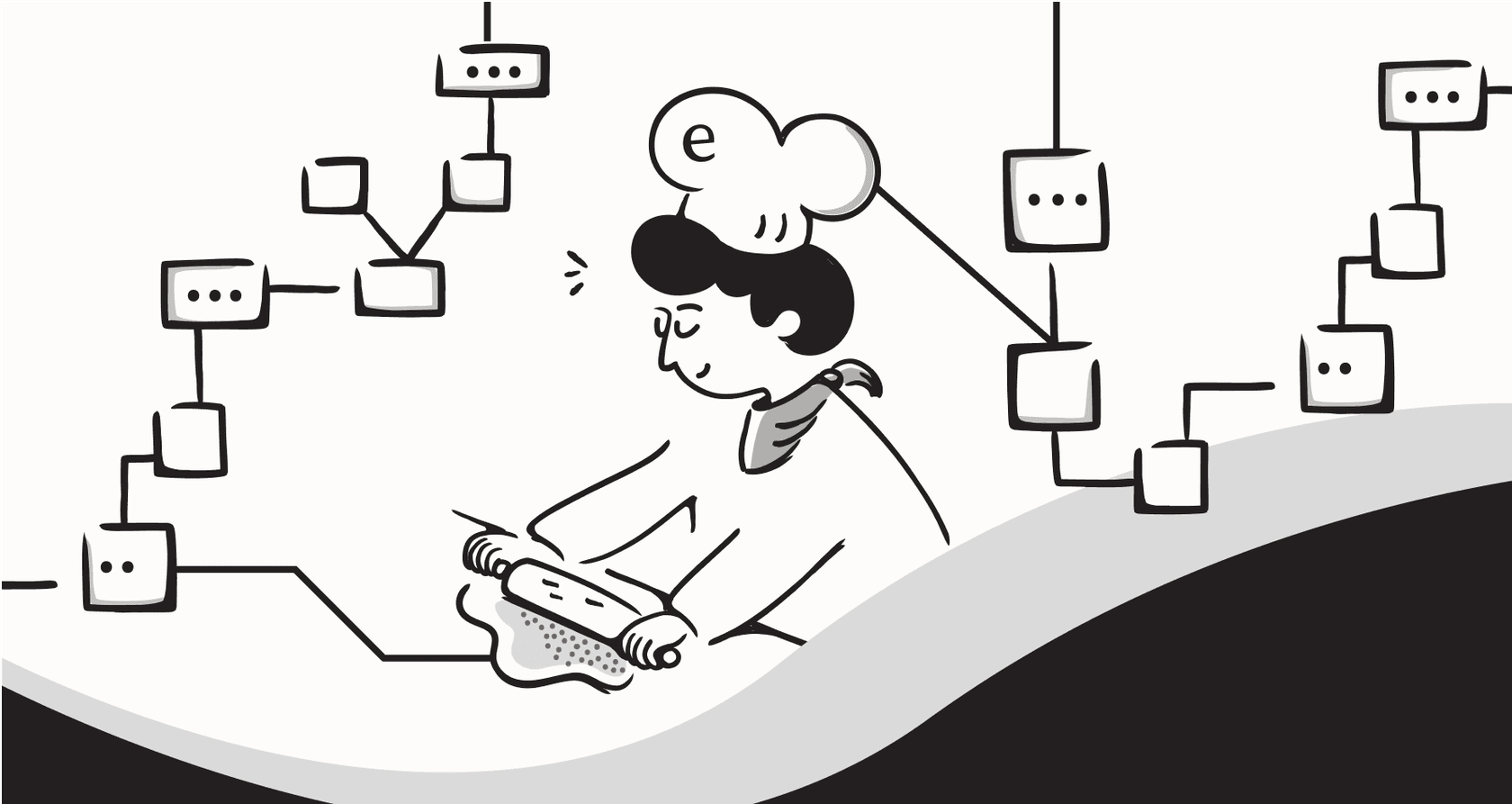
Employees spend nearly 20% of their work week just searching for the information they need. Support teams often face the same thing. Endless documentation scattered across platforms, with no reliable way to surface the right answer at the right time. Despite best efforts, users still struggle to find relevant information, and agents end up answering the same questions again and again.
This is where AI knowledge base software comes into the scene. With natural language processing and machine learning, they help teams organize information intelligently, spot gaps, and surface the right content based on context, not just keywords.
What is an AI knowledge base software?
AI knowledge base software helps people find the information they need faster by using artificial intelligence. Instead of relying on static articles or keyword-heavy searches, it understands what someone is really asking and connects them to the right answer.
It works by using tools like natural language processing, machine learning, and generative AI. That means it can organize content automatically, spot patterns in how people search, and even learn from past interactions to improve over time.

This image shows how AI knowledge base software understands questions, learns from past interactions, and creates useful answers using your existing content.
Platforms like eesel AI take this a step further by connecting with your help desk, documentation, and the tools your team already uses, like Slack, Teams, or Google Drive. It can automatically pull in content, sync updates across platforms, and help you create new knowledge base articles based on real conversations, whether they happen with customers or internally.
Instead of guessing what to include, you start with what people are already asking. The result is a knowledge base that stays useful, grows over time, and fits naturally into how your team works.
Key features of AI knowledge base management
There is a lot that goes into keeping a knowledge base useful. You need solid content, a way for people to find it, and a system that can keep up as things change. This is where AI becomes incredibly helpful. It takes care of the repetitive work, keeps everything organized, and makes your knowledge base easier to use.
Here is what to look for in an AI-powered system:
Creates content automatically: AI can spot repeated questions in tickets or chatlogs and turn them into draft help articles. This helps your knowledge base grow in the right direction without adding pressure to your team.
Understanding serach intent: Forget exact keywords. AI search understands intent. Whether someone types “can’t sign in” or “log in issue,” they’ll get to the same helpful answer.
Keeps your content up to date: As people use your knowledge base, AI flags stuff that’s outdated, unclear, or just not working. No need to manually review every article. Some platforms can even show how your updates affect customer satisfaction or support volume.
Personalizes the experience: The system knows who’s asking. A support agent might see different info than a customer. It adapts the results based on context so answers feel more useful.
Works with your existing tools: No switching tabs or learning new systems. A good AI knowledge base connects with what you already use such as Zendesk, Slack, Google Drive, Notion, etc.
Gives you real insights: You’ll get real data on how your content is performing: what’s being searched, what’s being found, and where people are getting stuck.
| What it does | Traditional knowledge base | AI-powered knowledge base |
|---|---|---|
| Writing content | Done manually, one article at a time | Drafted and improved automatically |
| Finding answers | Depends on exact keyword matches | Understands full questions and intent |
| Keeping info updated | Relies on scheduled reviews | Monitors and updates content in real time |
| User experience | Same for everyone | Adapts to who’s searching and what they need |
| Spotting content gaps | Needs manual tracking | Identifies missing topics automatically |
| Connecting with tools | Limited integrations | Built to work with your whole stack |
| Measuring performance | Basic metrics like page views | Tracks what’s working and what needs fixing |
Building your first AI knowledge base
Starting from scratch with an AI-powered knowledge base might sound complicated, but it is more manageable than you think. The goal is not just to set up software. It is to create a system that grows with your team and improves how you share information.
To give you a clearer picture, here is how a traditional setup compares to using an AI-powered knowledge base:
| Setup aspect | Traditional approach | AI-powered approach |
|---|---|---|
| Content migration | Manual import takes 2 to 3 weeks | Automated import in 24 to 48 hours |
| Organization | Manual tagging takes 100+ hours | Smart categorization in minutes |
| Integration | Long technical setup | Quick connections using APIs |
| Ongoing maintenance | Weekly manual updates | Real-time tracking and content alerts |
Step 1: Understand your needs
Before you choose a tool, take a step back and map out what you are working with. What tools do you already use? What kind of content do you have? Who needs access to the knowledge base, and how do they plan to use it?
Make a list of all the tools your team uses for support, collaboration, and documentation. This might include:
- Help desk platforms like Zendesk, Freshdesk, or Intercom
- Internal documentation stored in Confluence, Notion, or Google Drive
- Communication tools such as Slack or Microsoft Teams
- CRM systems like HubSpot or Salesforce
- Project management tools like Jira, Asana, or Trello
- Live chat tools embedded on your website
Think about where knowledge already lives across your organization. Your AI knowledge base should pull from those sources so people can get answers without switching between tools.
Step 2: Organize your content
Next, review the content you already have. This could be articles, internal wikis, product documentation, or saved replies from your support team. The more you can clean this up now, the better your AI system will work later.
Start with a simple content audit. Look for articles that are outdated, duplicated, or unclear. Make a plan for how you want to structure everything. Many AI platforms will help with automatic tagging and categorization, but it helps to give the system a strong starting point.
Step 3: Choose your platform
When looking at AI knowledge base software, choose one that supports natural language processing, offers real-time learning, and integrates easily with your current tools. If you already use a help desk like Zendesk, Intercom, or Freshdesk, make sure the platform you choose works smoothly alongside it.

eesel AI's integration panel highlights how this AI knowledge base software connects with help desks like Zendesk, Freshdesk, and Intercom for a seamless support setup.
eesel AI is one example that connects directly with popular platforms and allows you to bring in your own knowledge sources, like Google Drive, Slack, or Confluence.
Step 4: Set it up and test
Once you have chosen a platform, start with a small rollout. You can launch in a single department or use case first to test how the system performs. Most AI tools will guide you through uploading your data, setting permissions, and training the AI to respond accurately.
Use this time to gather feedback from real users. Pay attention to what they find helpful and where they get stuck.
Step 5: Review and expand
After the initial setup, check your analytics to see how the knowledge base is being used. Are people finding what they need? Are support tickets going down? Are certain topics underperforming?
Use these insights to improve and expand the system. Over time, your AI knowledge base becomes smarter, more accurate, and more helpful for everyone who uses it.
Pro tip: Start with a focused pilot program in one department before expanding. Platforms like eesel AI offer modular deployment options that make this approach particularly effective while maintaining consistent performance across scaling phases.
How eesel AI improves your knowledge base
eesel AI helps teams build knowledge bases that reflect real conversations, not just guesswork. Instead of starting from scratch, it pulls from the questions people are already asking and turns them into content that is useful, searchable, and easy to keep updated.
You build your knowledge base from actual conversations
Instead of writing every article from scratch, you can use past support tickets as your foundation. eesel AI helps analyze these interactions and generate helpful articles based on real questions and answers. You can select tickets from a specific time period or support agent and turn them into draft articles that are ready for review.

In eesel AI's history tab, you can open past conversation threads and turn real support messages into draft knowledge base articles.
This approach helps your knowledge base grow based on what users are actually asking rather than relying on assumptions.
You spot gaps through training insights
While eesel AI does not directly audit your knowledge base or suggest updates to existing content, it does highlight missing topics. These show up as “gaps in training” within the History tab, giving you a clear view of what users are asking but not finding.

The history tab in eesel AI highlights gaps in training, showing you what users are asking that your AI knowledge base has not yet covered.
You can also set up custom reports on conversations to identify repeated questions or unclear replies. This makes it easier to see where new content might be helpful.
Your content improves as training continues
As you continue to train the system with support tickets, your knowledge base expands and becomes more accurate. This is not a one-time task. It is a continuous process that uses real data to guide what should be created or improved.
Automation in this case does not mean removing your team from the process. It means helping them work more effectively by turning real conversations into useful, searchable information.
Measuring knowledge base ROI
A strong knowledge base should not just make things easier for your team. It should also drive real results. With an AI-powered system in place, it becomes much easier to track how well your knowledge base is actually performing.
Here is how to measure the return on investment and understand the impact on both support operations and customer experience. There are a few key metrics that can show how your knowledge base is doing:
| Metric | What it tells you | What to aim for |
|---|---|---|
| Deflection rate | How often users find answers without agent help | Between 30 and 40 percent |
| Search success rate | Whether people find relevant answers from a search | Over 75 percent |
| Agent productivity | How much more agents can handle with knowledge base support | A 20 to 30 percent increase |
Beyond support metrics, a strong knowledge base also improves team efficiency, customer satisfaction, and onboarding. Agents spend less time repeating answers. New hires get up to speed faster. Customers feel more confident finding help on their own.
By reviewing these numbers regularly, you can keep your knowledge base aligned with real needs. You can also make a stronger case for continued investment in support automation, backed by clear data.

eesel AI's reports dashboard shows key knowledge base metrics like deflection rate, search success, and feedback, helping you track performance and ROI in real time.
Tools like eesel AI provide built-in dashboards that track these metrics automatically. You can see how your content is performing, where users are getting stuck, and what improvements are helping reduce ticket volume.
Getting started with AI-powered knowledge management
A modern knowledge base should do more than store information. It should help your team move faster, support your customers better, and grow smarter over time. With the right AI tools in place, building and maintaining that system is easier than ever.
Whether you are just starting to organize your content or looking to improve what you already have, the best place to begin is with real data. Review past support tickets. Look at what users are searching for. Focus on what actually helps people get answers.
Platforms like eesel AI make it simple to turn your existing knowledge into something more powerful. From smarter search to faster content creation, it is designed to fit into the tools you already use.
Want to see how it works in practice?
Try eesel AI with a free trial or book a personalized demo to walk through the setup with our team.







